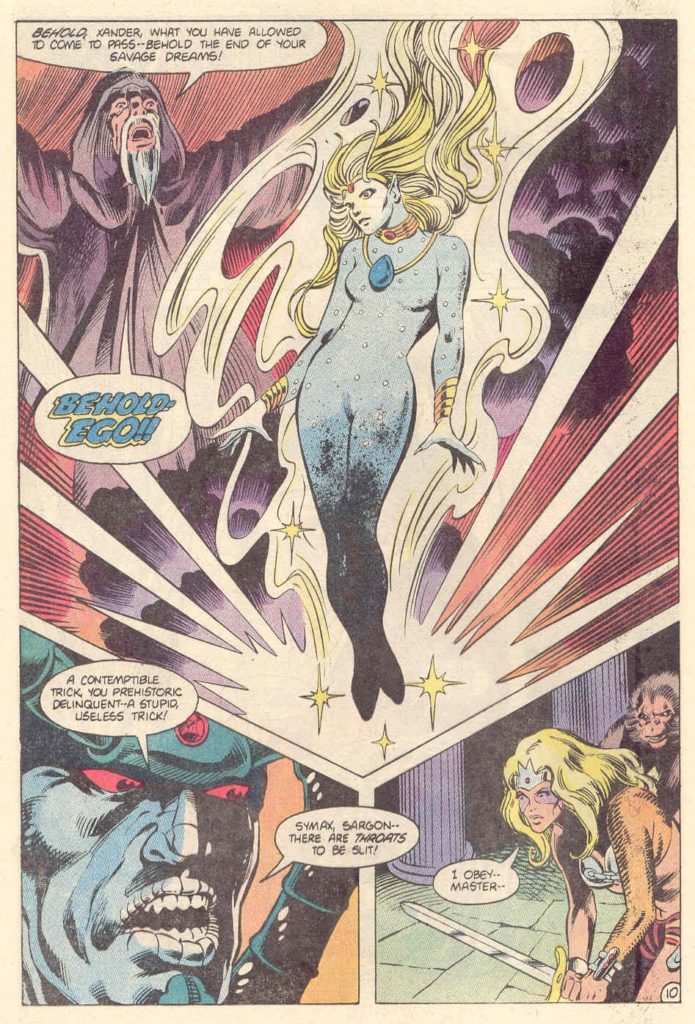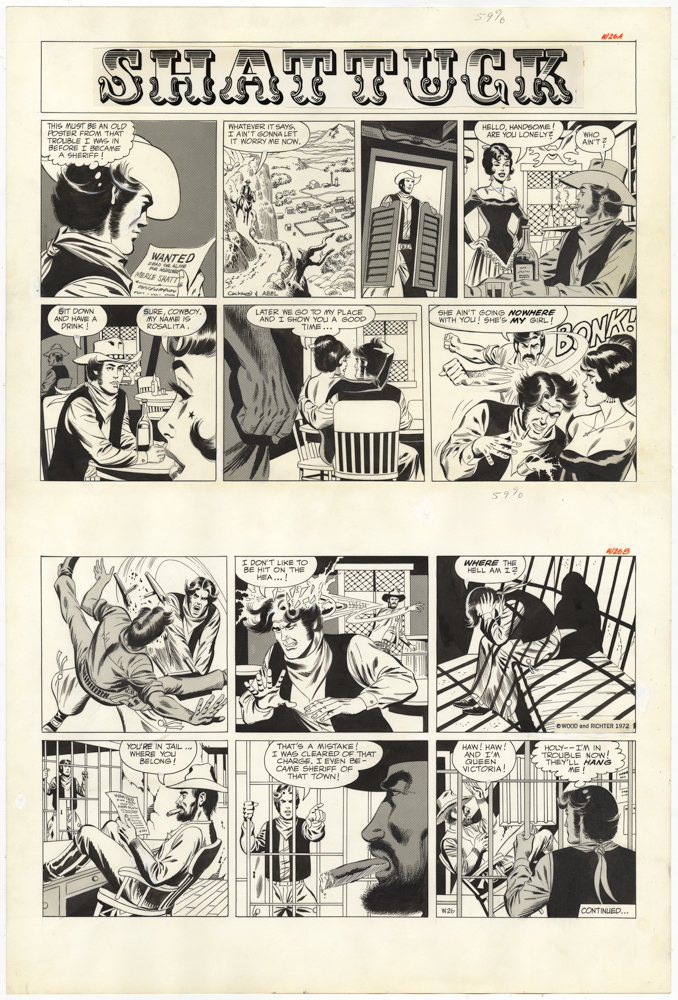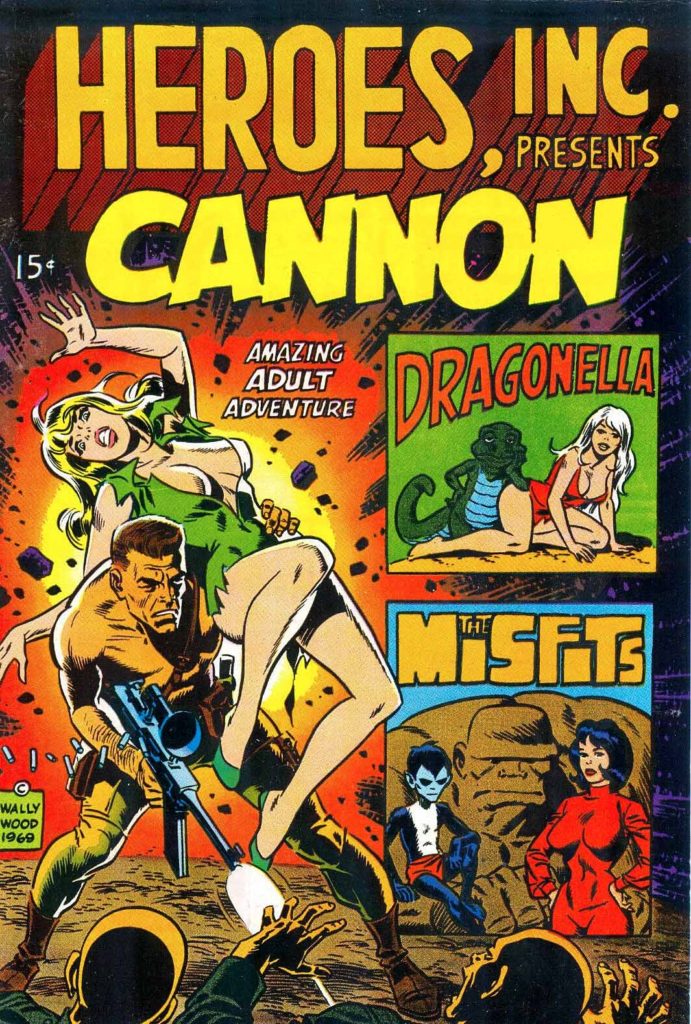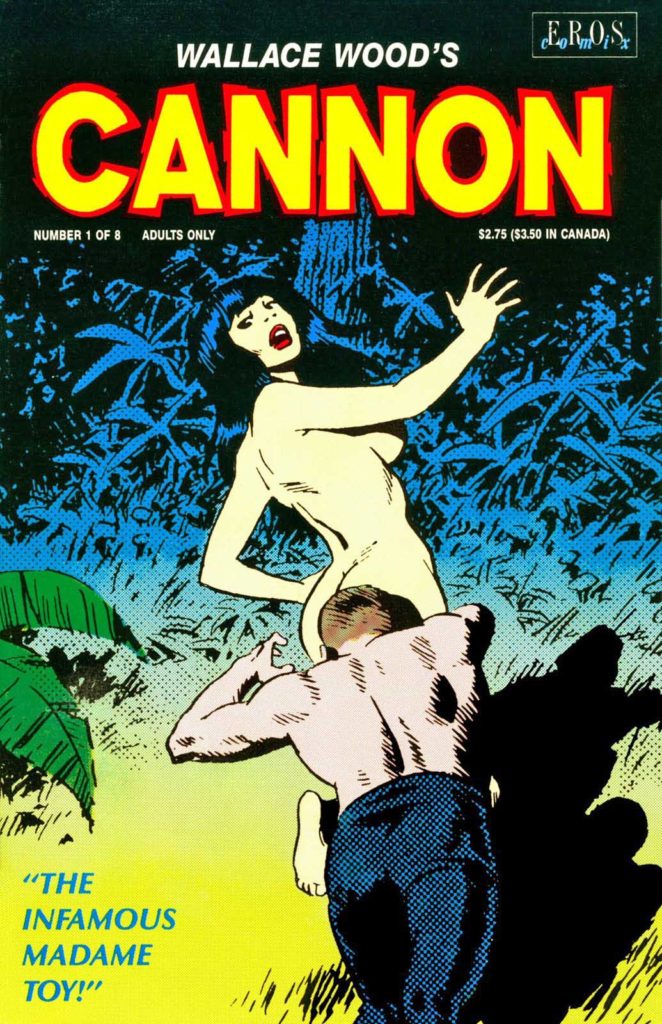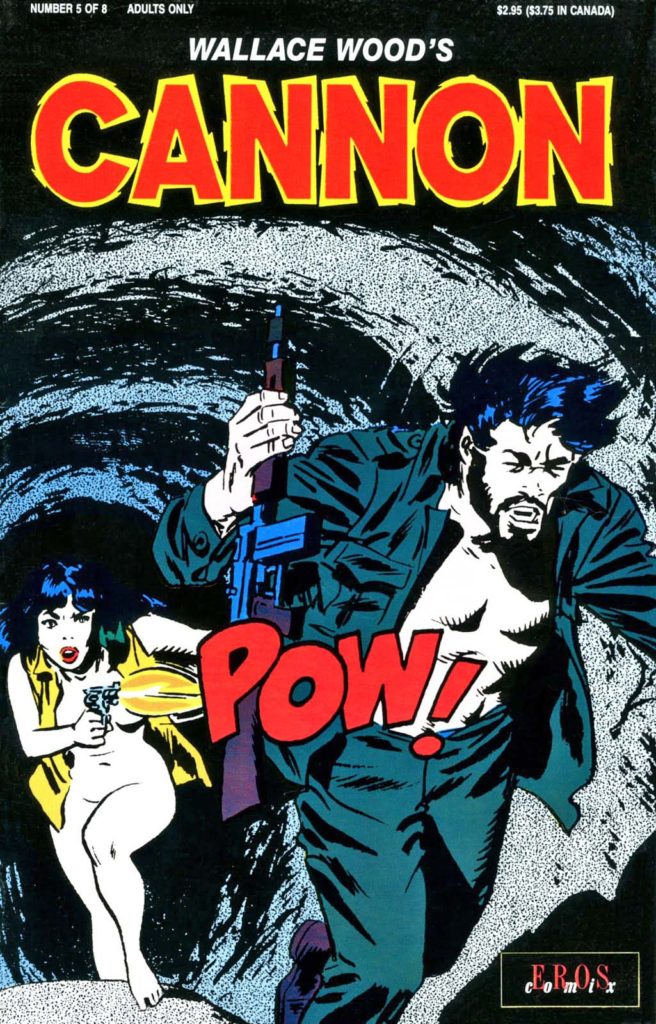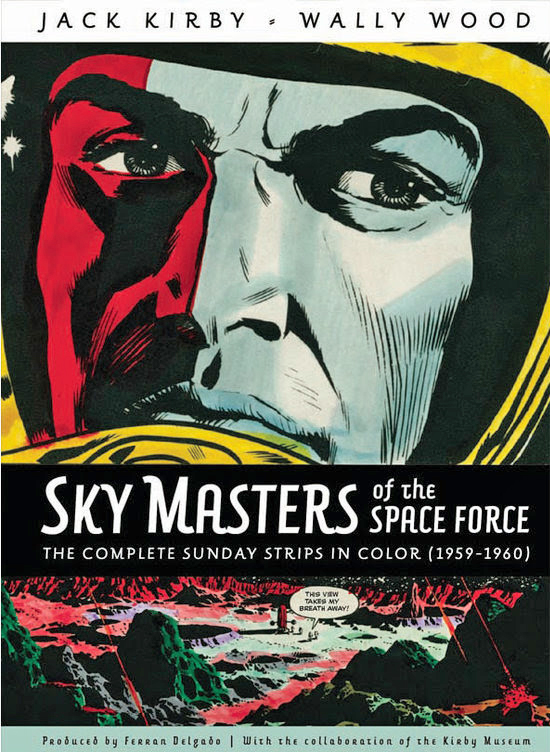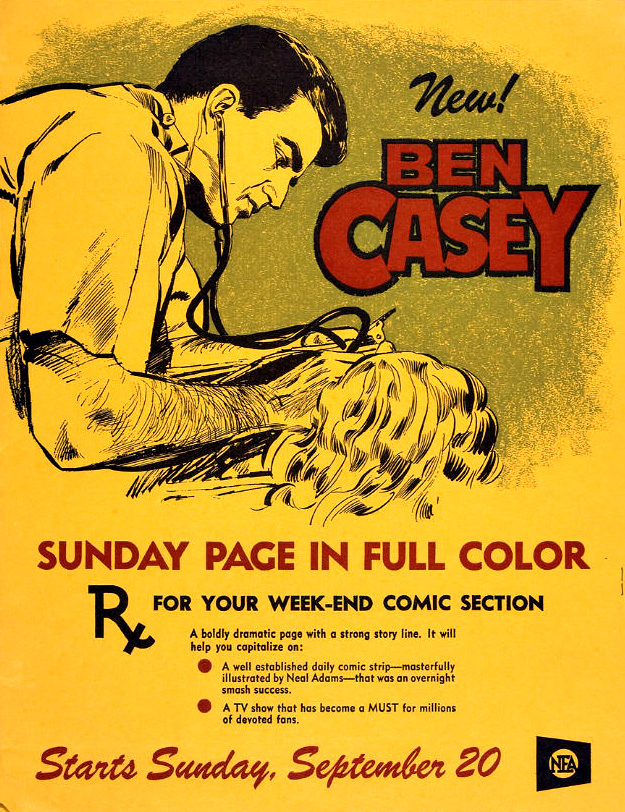Frank Brunner — Warp, And The Secret Origin Of First Comics
Warp #6, September 1983
Guest column from friend of the blog, Mike Gold:
It all started about 31 years ago with Jim Steranko. Or so I’m told.
There was this advertising mad man who became producer/business manager for Chicago’s prestigious Organic Theater (sic) Company run by director Stuart Gordon. His Organic was to theater what Marvel was to comic books circa 1961: in-your-face energy, on-your-feet stories, and actors who might eat the popcorn out of your lap.
Today, Stuart’s ensembles look like a Who’s Who of American entertainment: Among the great many who made their marks at the Organic were actors John Heard, Joe Mantegna, Dennis Franz, William J. Norris, and André De Shields and playwrights David Mamet, Ray Bradbury, and John Ostrander.
That’s heavy street cred. I was an early and constant fanboy.
Among their many soul-conflagrations was a three-part heroic science fiction play called Warp. This was a risk as it went up midway between the cancellation of Star Trek and the release of Star Wars. Warp ran in three-parts, performed in repertory, two episodes each night. After the initial year’s run they closed with a Warpathon: all three in sequence, each act and chapter separated by an exquisite course provided by world-class master chef Louis Szathmary.
I have been privileged to attend four astonishing entertainment events: the original Woodstock Festival, the Comic Relief benefit at Radio City Music hall, the Chicago Blackhawks / Detroit Red Wings outdoor hockey game at Wrigley Field, and both of the Organic Theater Company’s Warpathons. That list wasn’t in order of preference.
My involvement with Stuart went beyond that of a mere fan and patron. We produced a comic book, Weird Organic Tales, as a subscription device for the company. By “we” I mean Joe Staton, Bruce Patterson, Chuck Fiala, Paul Kupperberg, and myself. I believe the print run was somewhere north of 200,000 copies.
So when Warp was revived for what turned out to be another year-long run (ending in the second Warpathon), this time at a larger venue, the aforementioned mad man, Rick Obadiah, contacted me about getting the comic book community to adopt the show and help spread word-of-mouth. I asked Rick how he thought of me, and Rick responded it was Jim Steranko’s recommendation. So Steranko was a grandfather to First Comics.
After the initial Chicago run, the first part of Warp played Broadway for a brief time. The provincial uptights of the 1973 Broadway world couldn’t deal with on-stage heroic fantasy in a science fiction milieu: it was all childish crap to those well-insulated Morlocks. The New York comic book community supported it to the gills, but that wasn’t enough.
I figured those long-suffering comics folk were still lusting to see the second part of Warp, even though it was almost eight years later. Coincidentally, the annual Chicago Comicon, of which I was a sponsor, was going to be happening at the time the second chapter was set to debut. I suggested we hold a special showing for the comic book industry – the writers, artists, editors, and publishers. We supported it with a panel at the convention and all the publicity we could muster, which was considerable. At that time, the Chicago Comicon was almost as large as the San Diego show, which had yet to be discovered by Hollywood.
Rick and I were well aware that, after seeing that second play, he would likely get an offer from Marvel, DC or both for the comics rights. I signed on as Rick’s consultant and, lo and behold, at the post-play reception both DC’s Paul Levitz and Marvel’s Jim Shooter made that very suggestion. Rick agreed to go to New York within the month, and he and I set down to work.
First, pun intended, I told Rick that we would make more money if we did it ourselves. There was no magic to producing a comic book if you can get good talent; Weird Organic Tales proved that. I detailed how the direct sales distribution system worked and revealed the proliferation of dedicated comic book stores across the nation. Rick thought I was nuts. OK, so that wasn’t a particularly original observation. He thought it be best if he were to just license it to people who ostensibly knew what they were doing. I said fine, and I proceeded to show him the business of the comics business.
I suggested he schedule the DC meeting first. “Why?” Rick asked. “Because Jim Shooter is simply going to say he’ll match DC’s offer and up the ante with the truism that they are Marvel Comics so the book would sell better.” Then I outlined ten things to watch out for at his DC meeting.
Obadiah was overwhelmed. He refused to believe what I said. “These are professional businessmen,” Rick declared. “They’ve been in business for decades!” Yes, I responded, but it has a mom’n’pop Depression-era mentality. Mind you, I had already spent a couple years as a marketing executive of DC Comics. Nonetheless, Rick still didn’t believe me. Fine; we proceeded with our efforts and the producer flew out to New York.
Rick called me after his DC meeting.
I told him what happened. I had a lot of friends on DC’s staff, and they had ears, so with barely concealed snark, I asked how close I came with my top ten list. Rick let out a sigh.
“You were nine for ten.” Hmmm. The industry was making a some progress. “I’m going to meet with Marvel tomorrow, but I think we’re going to take your publishing suggestion a lot more seriously.”
When Rick called back he told me Jim said he’d match DC’s offer and he noted the book would sell better at Marvel Comics. We agreed that the meeting we scheduled upon his return to Chicago would now be a much longer meeting.
When Rick came to my office – I was editing a home video magazine that, not coincidently, largely employed comic book writers and artists as its freelance staff – we began our real work. I started with the basics needed to run a comic book company and I noted that even with a minimal staff in order to be profitable we had to publish the maximum number of titles the staff could produce. It made no economic sense to simply publish Warp.
And thus First Comics was born.
I came up with a publishing plan and brought in talented friends who were also visionaries and risk-takers: Joe Staton as both a contributor and our art director, Bruce Patterson as a contributor and production manager, and writers and artists Howard Chaykin, Mike Grell, Martin Pasko, Peter Gillis, Jack C. Harris, and Steve Ditko. Our staff was rounded out with Rick Felber as business manager, Rick Oliver as associate editor (if you wanted a job at First Comics, it helped if your first name was Rick), Kathy Kotsivas as office manager, and Ken Levin and Ralph Musicant as directors and advisors. Production artists and art directors Alex Wald, Doug Rice and Paul Guinan later joined us.
We gave Neal Adams right of first refusal on Warp: he had been involved in the Broadway production, producing the poster and Playbill art and reworking some of Cookie Gluck’s fantastic costumes. Neal was interested but realistic about his work schedule.
Being familiar with Neal’s workload, I already had an idea for the perfect Warp artist. Frank Brunner had recently quit Marvel over typically valid “publisher-treats-freelancer-like-shit” issues, and he had given a cover interview to The Comics Journal about how the business sucked. Frank’s style was perfect for the property, and his concerns were perfectly justified.
Joe’s property E-Man was next, followed by Mike’s Jon Sable Freelance and Howard Chaykin’s American Flagg!. I wanted to introduce some new talent under the cover of an already-established property between Sable and Flagg. Grell had done Starslayer at Pacific Comics and, while he was tied up on Sable he still wanted the property to continue. I brought in my friend of ten years, actor/playwright John Ostrander, and artist Lenin Delsol. Both were exceptional; eventually, Lenin succumbed to a bad case of Dreaded Deadline Doom and was succeeded by a guy I outright stole from TSR, the Dungeons and Dragons people guy; named Timothy Truman. Shortly thereafter, John and Timothy – with some help from Lenin – created GrimJack.
Along the way we picked up Nexus, The Badger, and Whisper and their creator/producers, Mike Baron, Steven Grant, Steve Rude, Jeff Butler and Norm Breyfogle. Then we went tits to the wind and produced our first original project by talent few had heard of: Mars, by Mark Wheatley and Marc Hempel.
Now it’s 30 years later. Damn near everything we did during my tenure at First Comics has been reprinted in album editions, and I remain close to just about everybody involved. It’s been the most gratifying experience of my career.
It all started right here, with Warp, the science fiction play written by Stuart Gordon and Bury St. Edmund, directed by Gordon, and performed by several casts of gifted actors. Doing it was a no-brainer; how could we go wrong?
We can reread the comic book but we can’t recreate that original stage experience. Such is the magic of theater. But Warp and Stuart Gordon turned a lot of comics and science fiction fans into theater fans, including myself. I will be forever grateful.
Mike Gold is a columnist and podcaster for Pop Culture Squad (popculturesquad.com), a political activist, and media metaphysician for arrogantMGMS. An-award winning editor for First Comics and for DC Comics, Gold received the Heroes Alliance Dick Giordano Humanitarian of the Year Award in 2011.
This essay originally appeared in the 30th Anniversary trade paperback edition of Warp, published by 1First Comics and is probably copyrighted by somebody so All Rights Reserved.




